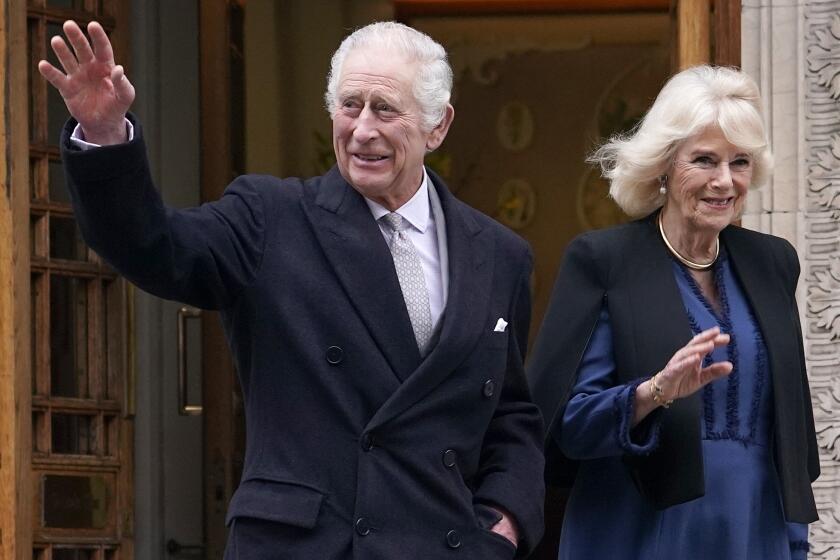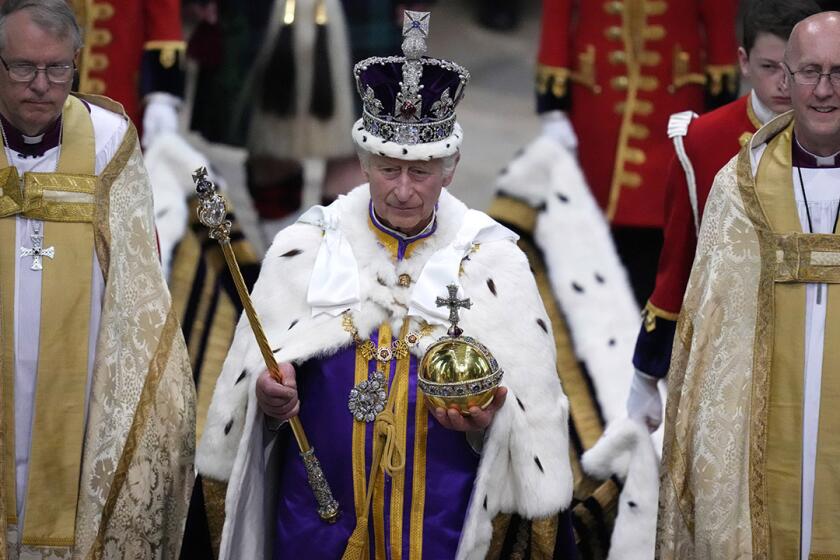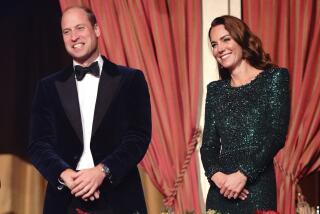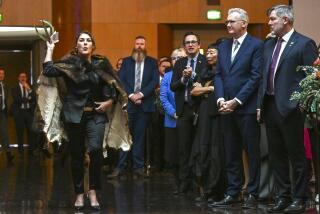King Charles III’s illness lays bare the pressures at Buckingham Palace
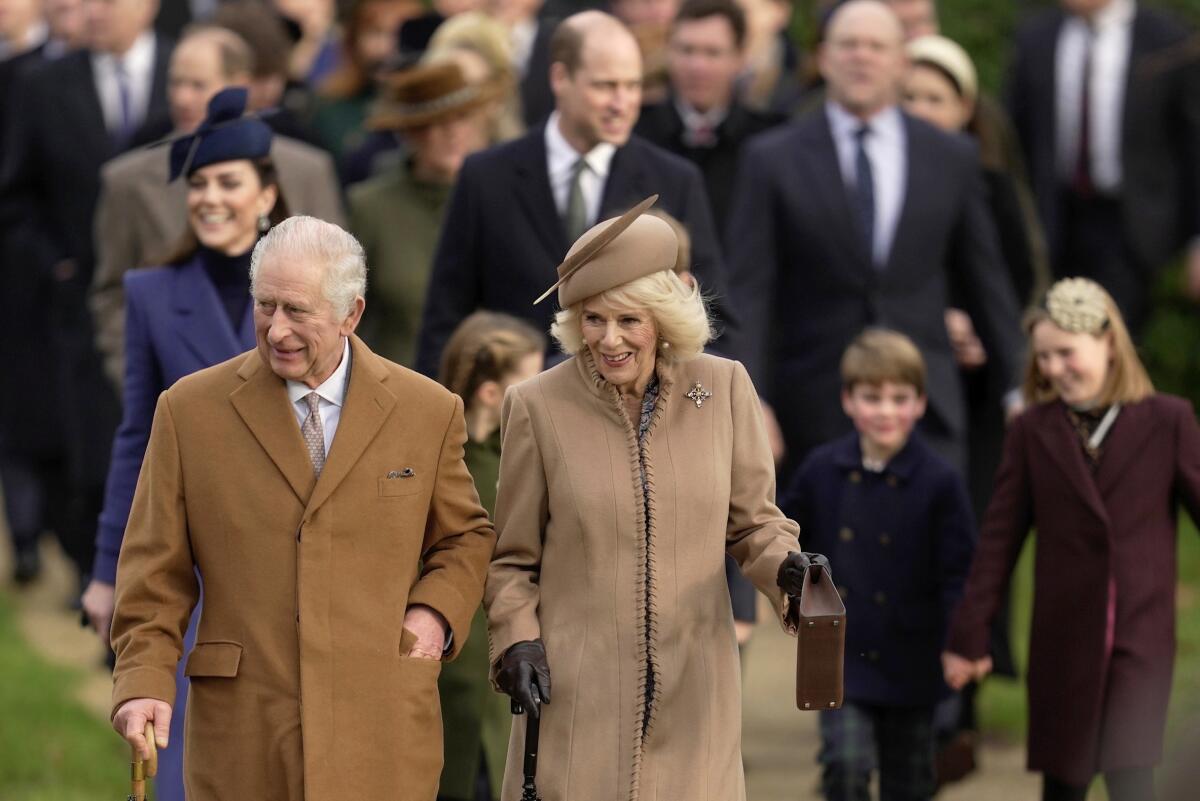
LONDON — King Charles III’s cancer diagnosis heaps more pressure on the British monarchy, which is still evolving after the 70-year reign of the late Queen Elizabeth II.
When he succeeded his mother 17 months ago, Charles’ task was to demonstrate that the 1,000-year-old institution remains relevant in a modern nation whose citizens come from all corners of the globe. Now the king, who turned 75 in November, will have to lead that effort while undergoing cancer treatment.
Buckingham Palace announced Monday that Charles had been diagnosed with cancer, not disclosing what sort. The king plans to continue fulfilling his state duties, such as reviewing government papers and meeting with the prime minister, but he will step back from public appearances.
While royal experts say the diagnosis is unlikely to destabilize the House of Windsor, significant pressures remain.
Here is a look at the major challenges facing the royal family.
The palace says the cancer is not related to the king’s recent treatment for a benign prostate condition. It did not say what form of cancer he has.
An older monarch
Charles waited almost 74 years to become king — longer than any previous heir to the throne. Now, at an age when most of his contemporaries are well into retirement, he has had less than two years to put his stamp on the monarchy.
Although the duties of a constitutional monarch are largely ceremonial, the royal whirl can be exhausting. Besides the occasional procession in full royal regalia, there are meetings with political leaders, dedication ceremonies, and events honoring the accomplishments of British citizens. That added up to 161 days of royal engagements in Charles’ first year on the throne.
The pressures on an older monarch aren’t unique to Charles. Denmark’s Queen Margrethe became the first Danish monarch to abdicate in nearly 900 years last month when she handed over the throne to her elder son, Frederik. Margrethe, 83, had always maintained she wouldn’t quit.
“God save the king!” rings out in Westminster Abbey as Britain’s Charles III is crowned amid pomp and pageantry.
But Britain isn’t Denmark. Queen Elizabeth II had stuck by a commitment to devote her life to service until her death at 96. Charles made a similar commitment during his coronation.
“I don’t think he will go anywhere anytime soon,” said Joe Little, managing editor of Majesty Magazine. “I still think that abdication is not a word that is bandied about at Buckingham Palace.
“I mean, who knows what the coming years will bring, but with the best will in the world, Charles III will reign as his mother did, and until the moment of his death.”
A shrinking ‘workforce’
Charles’ illness comes at an awkward time as he cuts costs, in part by reducing the number of “working royals.”
Not only is he stepping away from public duties, but his daughter-in-law Kate, the Princess of Wales, isn’t expected to resume her royal tasks until April due to recent abdominal surgery.
With two of the most visible family members out sick, it will be more challenging for the family to keep up. Hundreds of charities look to their connections to the royals to keep interest in their work at a high level.
Who will cut the ribbons, open the swimming pools, shake the hands of civic leaders at institutions across the land if not the Windsors?
“They are resilient. Lord knows the royal family’s been through a lot of things over the years ... and they’ve bounced back. But the underlying fact is .... he is 75. The queen is 76,” said Sally Bedell Smith, author of “Prince Charles: The Passions and Paradoxes of an Improbable Life.″
“It’s a reminder that they are vulnerable in ways that people haven’t particularly liked to think.”
A family divided
Charles’ relationship with his younger son was strained even before Prince Harry and the Duchess of Sussex moved to the former Meghan Markle’s home state of California and left royal duties in 2020.
Charles told Harry the news about his cancer, and his son traveled to the U.K. soon after it was announced.
But with his book “Spare” and a Netflix series, Harry has been a shadow over the early years of his father’s reign. Can illness offer an opportunity for reconciliation?
“That can only be a good sign,” Little said of Harry’s visit. “What will come of that remains to be seen. It’s unlikely that we will be told anything officially by the palace. So, again, a lot of conjecture will come into play. But we think the king and his younger son haven’t seen each other since the coronation back in May.”
“So, it’ll be a welcome meeting from both sides.”
The question of relevance
Charles reigns over a country that looks much different than the one in which his mother was crowned in 1952.
Over the last seven decades, the U.K. has become a multicultural nation, with schoolchildren speaking more than 300 languages and less than half of the population identifying as Christian.
Against this backdrop, Charles has tried to demonstrate the continuing relevance of the monarchy by reaching out to faith leaders, ethnic minorities and each of the four countries that make up the United Kingdom — Scotland, Wales and Northern Ireland, in addition to England.
Supporters of the monarchy argue that this is the main reason it’s so important: The crown, they say, is a unifying force and a symbol of stability in a rapidly changing world, and a reminder of the common history and traditions that unite a nation of 67 million people.
But others see a hereditary monarch as anachronistic — a vestige of Britain’s feudal past that does not represent the people of today. During Charles’ coronation, proponents of republicanism staged protests calling for the monarchy to be replaced by an elected head of state.
“The monarchy serves at the pleasure of the people. And the people need to believe that the monarchy is in tune with what’s going on in the world,” Smith said. “And ... I think that’s a kind of constant challenge.”
A legacy of empire
While the monarchy is a symbol of Britain’s history, that can be a two-edged sword.
The crown is also a reminder of the British Empire’s dominance of Indigenous people around the world and its role in the transatlantic slave trade.
Charles faces pressure to address these issues, including from Prince Harry, who has called on the royal family to confront what he calls its unconscious racism; and from Caribbean nations seeking reparations for slavery.
The king responded to these calls by opening the royal archives to scholars researching the monarchy’s links to the slave trade.
He also addressed the misdeeds of Britain’s colonialism in October during a state visit to Kenya, which was under its rule from 1888 to 1962.
“The wrongdoings of the past are a cause of the greatest sorrow and the deepest regret,” Charles said in the African nation. “There were abhorrent and unjustifiable acts of violence committed against Kenyans as they waged … a painful struggle for independence and sovereignty — and for that, there can be no excuse.”
“In coming back to Kenya, it matters greatly to me that I should deepen my own understanding of these wrongs,” he said, “and that I meet some of those whose lives and communities were so grievously affected.”
More to Read
Sign up for Essential California
The most important California stories and recommendations in your inbox every morning.
You may occasionally receive promotional content from the Los Angeles Times.
